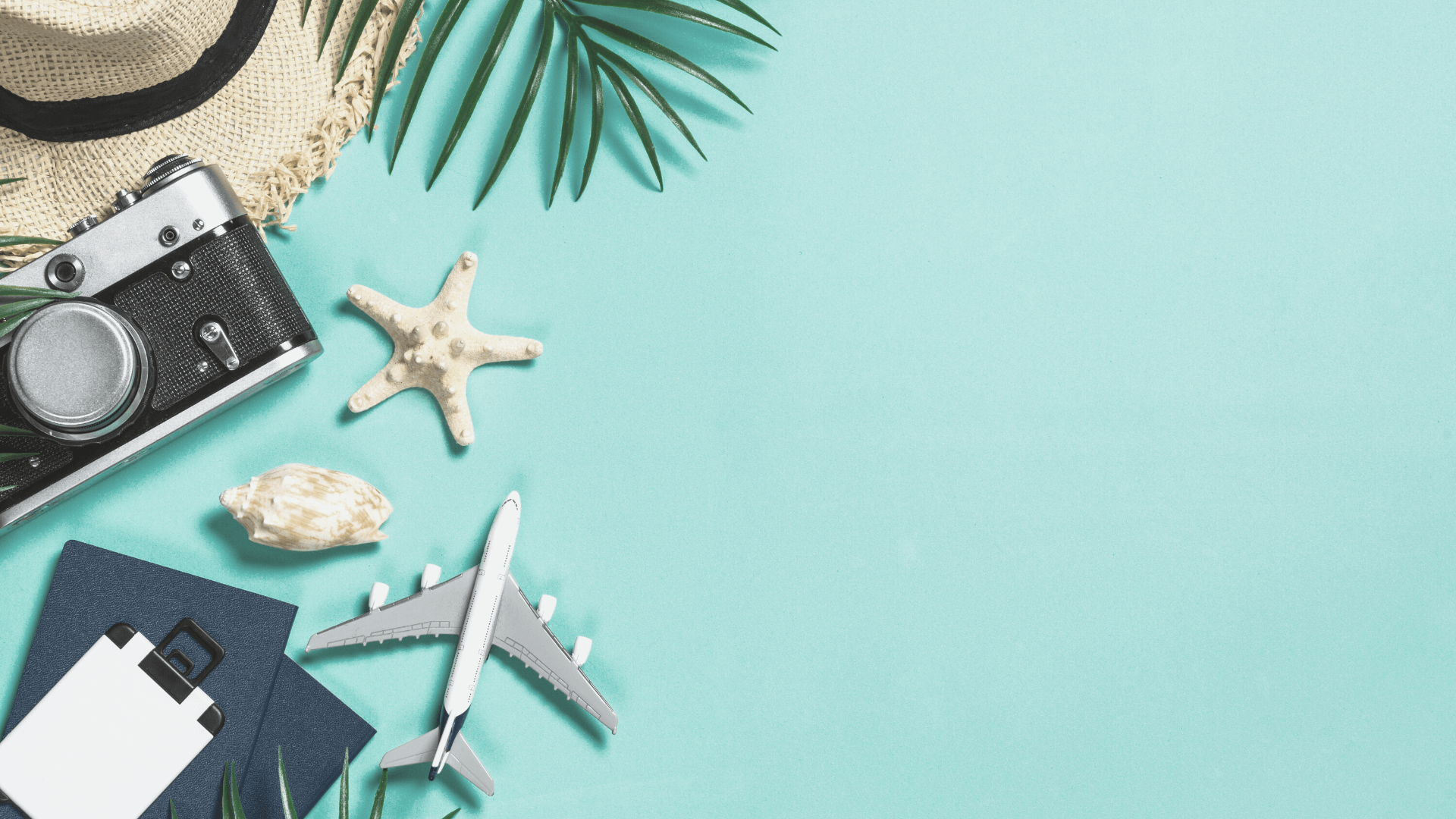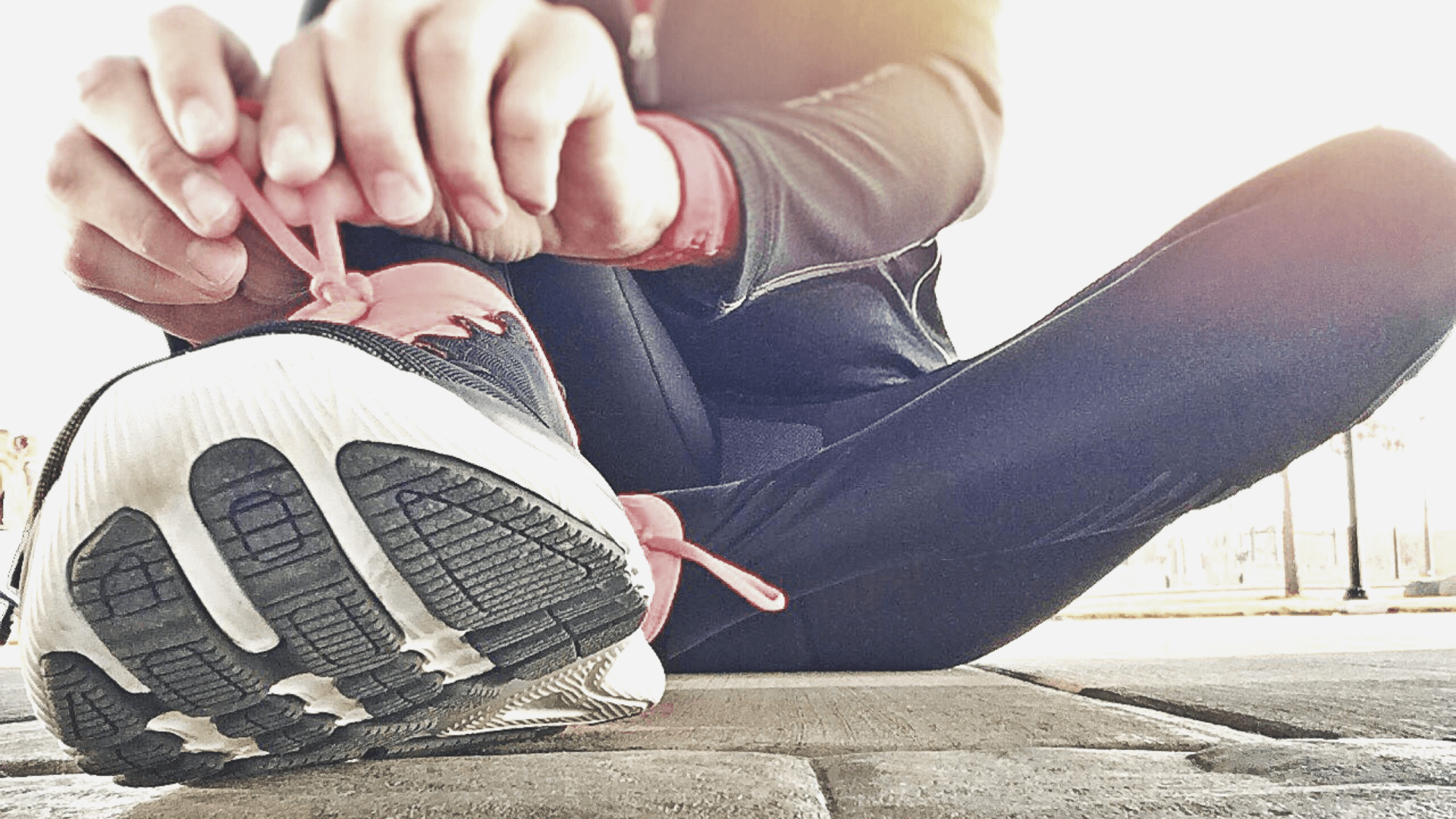I’m sure you know already. In case you don’t; your digestive system is elaborate with a lengthy, complex process.
Ready to nerd out today?
I am explaining your digestive system in some fairly Layman-ish terms.
People rarely want to read posts like this because typically they are from huge medical journals, thousands-upon-thousands of words long, and too complex to understand.
But not this one; not today.
I’m keeping it simple and to-the-point, and at the end of the article I break it down so you can digest it for your own needs.
This is an extended version of information you’ll find on pages 3-4 in The Leaky Gut Meal Plan: 4 Weeks to Detox and Improve Digestive Health.
To help us better understand leaky gut syndrome, let’s first understand the process of digestion in its most basic form.
Your Digestive System
Click HERE to save this post for later.
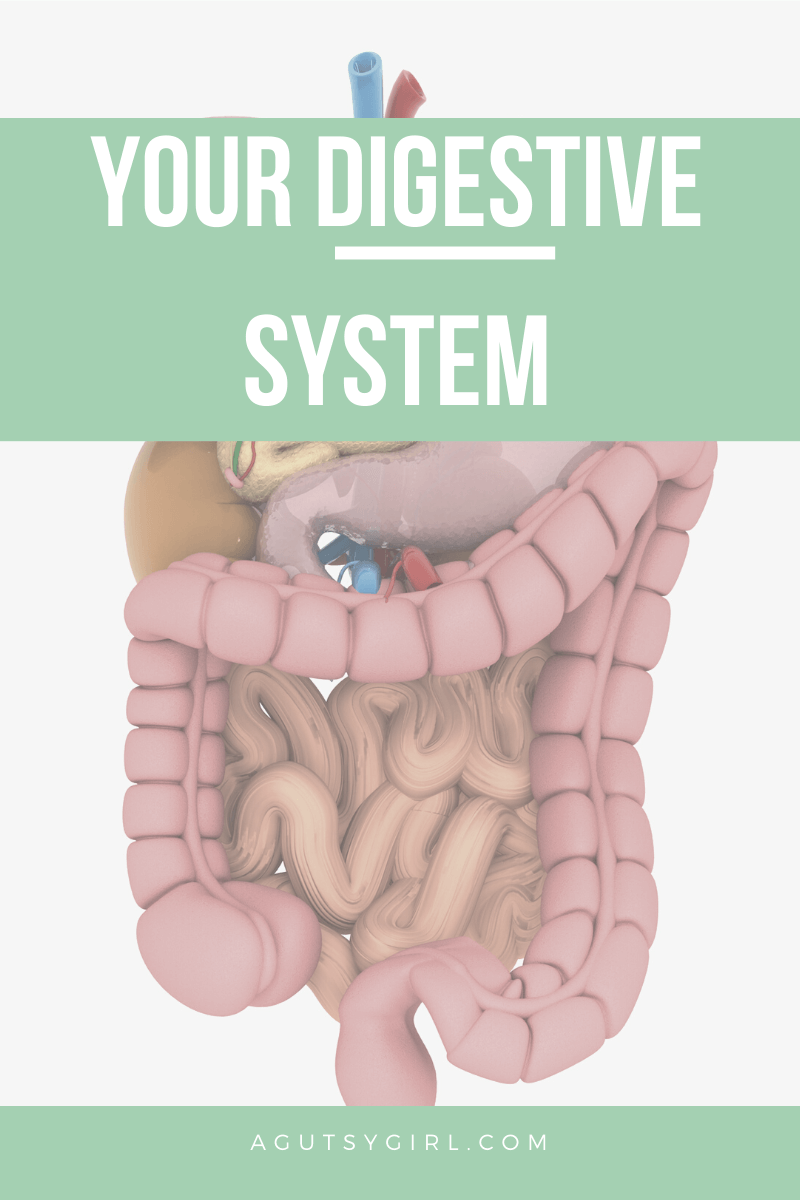
The entire digestive system contains 10 organs, spanning 9 meters, with over 20 specialized cell types, making it one of the most diverse and complicated systems in the entire body.
GI Anatomy
It contains 4 main components:
- the GI tract (gastrointestinal tract)
- pancreas, gallbladder, and liver
- enzymes, hormones, nerves, and blood
- mesentery
The gastrointestinal tract (GI tract) is approximately 30-40 square meters (that’s enough to cover half a badminton court!). It is made up of the liver, pancreas, and gallbladder.
The liver, pancreas, and gallbladder are simply a series of hollow organs that run from the mouth to anus. They are known as the mouth, esophagus, stomach, small intestine, large intestine, and anus.
Additionally, the small intestine is made up of three parts: the duodenum, jejunum, and ileum. The large intestine is made up of four parts: the appendix, cecum, colon, and rectum (lowest part of the large intestine).
GI Tract
The GI tract not only breaks food down, absorbs nutrients and water and removes waste products, but it also acts as a barrier between your gut and bloodstream to prevent harmful substances from entering your body.
Inside the GI tract is where bacteria (also called gut flora or microbiome) live (both good and bad), helping (or hurting) the digestive process.
Tight Junction
In a healthy gut, the digestive system breaks nutrients down into small enough parts for the body to absorb and use for energy, growth, and cell repair.
The intestines have tight junctions, or small gaps, that allow nutrients and water to pass into your bloodstream.
They are supposed to be tight because when they are not potentially harmful substances like bacteria, toxins and undigested food particles enter the bloodstream.
Digestive Process
The entire process begins before food even touches your mouth. The brain begins to anticipate food coming, producing saliva (approximately 1-1.5 liters of this liquid is produced daily).
Once chewing begins, saliva mixes with enzymes to start breaking down starches. It then moves down 25 centimeters of esophagus before hitting the stomach.
In a healthy gut, food moves through the GI tract through a process called peristalsis, which is a wave-like movement that helps push food forward. Other things contained in the GI tract help the process as well; chewing, digestive juices, stomach acid, bile, saliva, and enzymes.
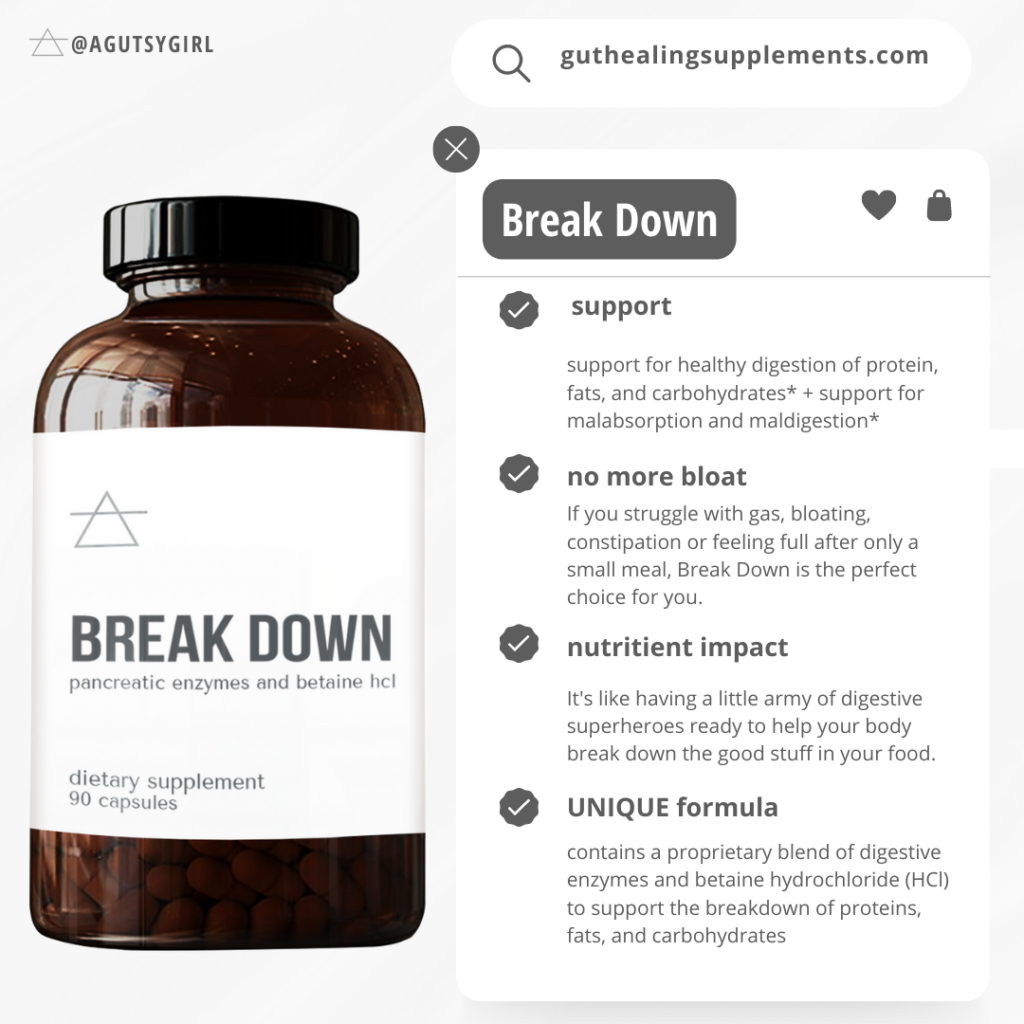
Get help breaking food down with a top-quality digestive enzyme, Break Down.
When food hits the stomach, it is broken down even further with the help of digestive juices and enzymes from the stomach wall. The hormones then alert the pancreas, gallbladder, and liver to produce digestive juices and transfer bile (which digests fat) to prepare for the next stage of digestion.
Food will stay in the stomach for about 3 hours. It then becomes ready to move to the small intestine.
In the small intestine most of the nutrients from food become absorbed, and special cells help these absorbed nutrients cross the intestinal lining into your bloodstream. The rest of the body then delivers these nutrients.
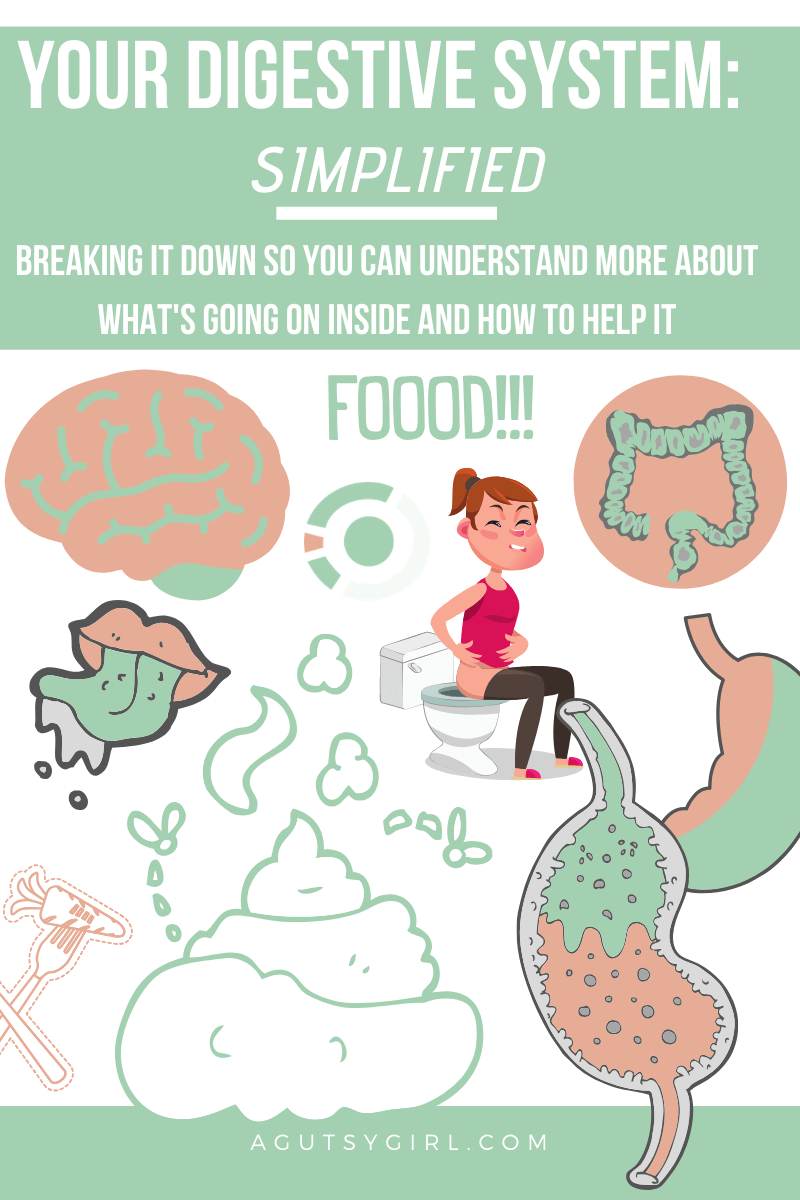
Digestion Completion
Digestion is completed when leftover fiber, water, and dead cells then head to the large intestine (also known as the colon).
The body drains out most of the remaining fluid through the intestinal wall. The final product left is stool, which the colon squeezes through to the rectum.
Nerves expand in the rectum, ultimately excreting the final waste through the anus.
How Long Does it Take Food to Digest?
This entire process takes between 30-40 hours before it’s fully completed.
Sources: HERE, HERE, HERE, HERE, HERE, and HERE.
Missing Links for the Digestive Process
Can you see now how missing links can disrupt the digestive process?
- The entire process begins before food even touches your mouth. If the brain is where it starts, then what happens if your primary foods are completely out of whack prior to that first bite?
- How will food move appropriately if the peristalsis process is off? This is why I talk about the MMC and prokinetics frequently.
- What if you’re hardly chewing your food? Or maybe your stomach acid is too high or too low? Perhaps you have low digestive enzymes or bile is inadequate?
- Let’s pretend you’re like many women I know (me included), with hormones that have been tinkered with. Remember, your hormones are critical in this process as they alert the pancreas, gallbladder, and liver to produce digestive juices and transfer bile (which digests fat) to prepare for the next stage of digestion. Are you seeing the thyroid-SIBO connection here at all?!
- If most of the food nutrients are absorbed in the small intestine, but you have SIBO and it’s stealing those nutrients, then what?
- And finally, the process of elimination. Everything from an inflamed rectum to a mental block around going poop can halt elimination.
Wrap Up
I wanted to share this with you because I think it’s important in understanding why choosing to eat or not eat cupcake at a friend’s birthday party is not really the main question.
So many things go into gut health and gut healing. It all starts with your digestive system; the pieces that comprise it both internally and affect it externally.
If you liked this post, you might also enjoy:
- Master Guide to Prokinetics
- 11 Natural Ways to Increase Stomach Acid
- 34 Gut Health and Healing Habits {to track}

Xox,
SKH
🤰 bloating be gone! weight loss through optimal gut health for women
💃ʜᴇᴀʟ ʏᴏᴜʀ ɢᴜᴛ. ʜᴇᴀʟ ʏᴏᴜʀ ʟɪfe.
🫶🏻 founder gutbyome.com


